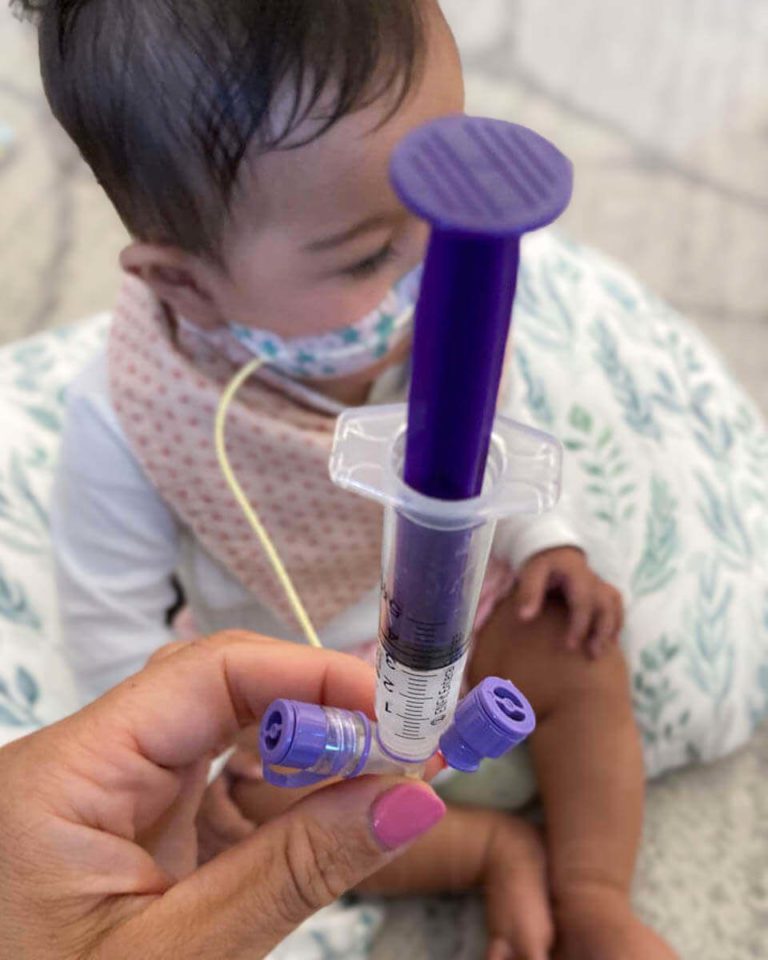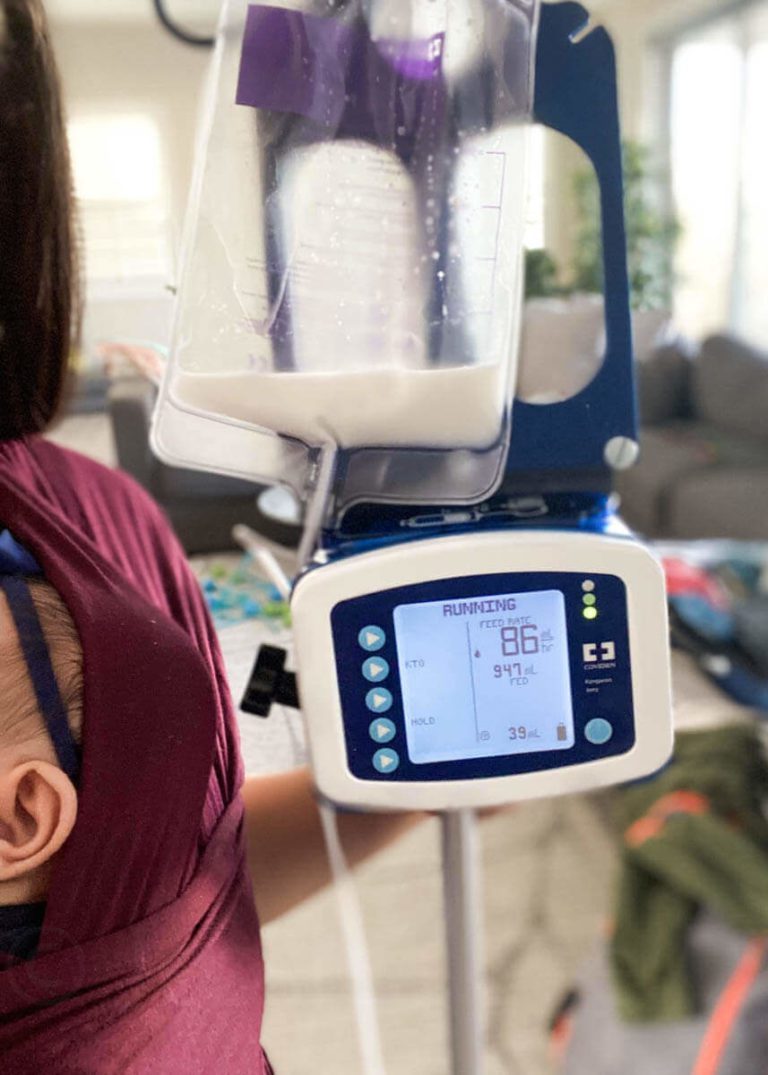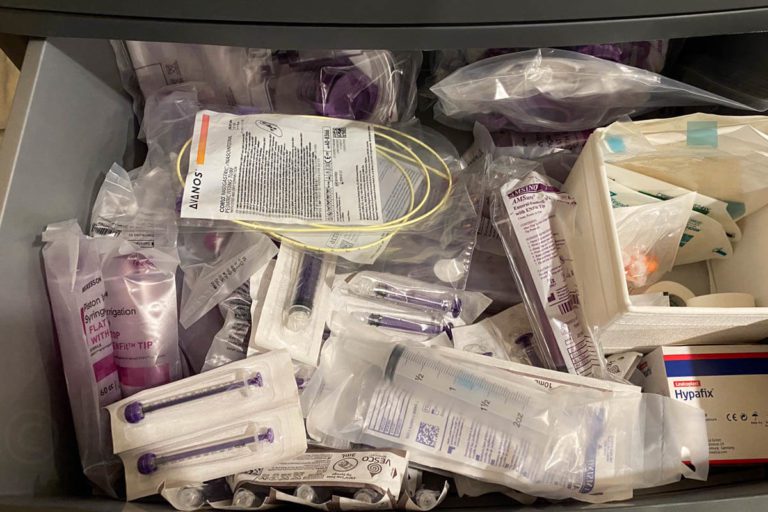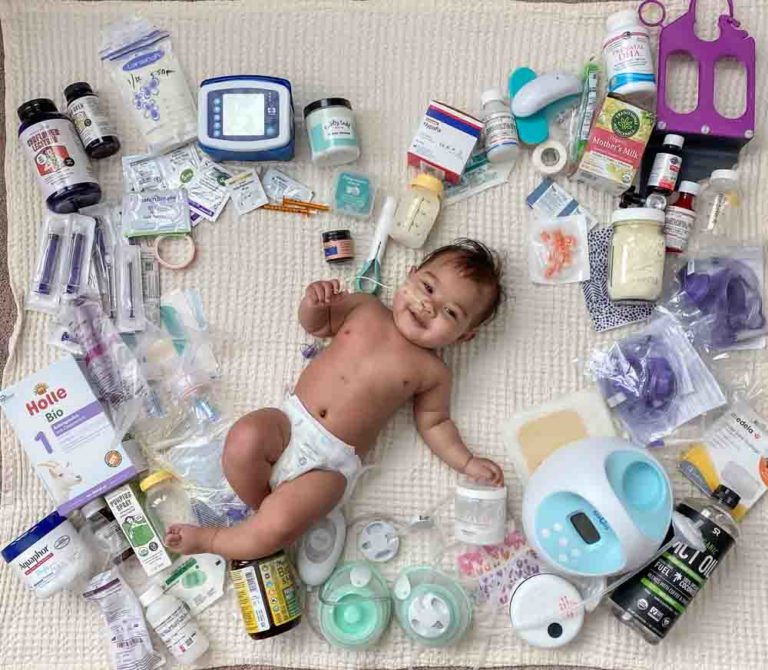From Tip to Tail: Understanding NG Feeding Tube Parts
At first, I was freaked out by the idea of having to feed my daughter through a tube. I knew nothing about tube feeding, it was all so foreign and scary. And that’s just it. It was all new and different and I was uneducated about feeding tubes. It’s easy to be scared of things we do not understand. So here I hope to demystify NG feeding tube parts and where they go in a baby to aid any new parents on this special feeding journey.
No time to read right now? Pin it or email it to yourself for later!
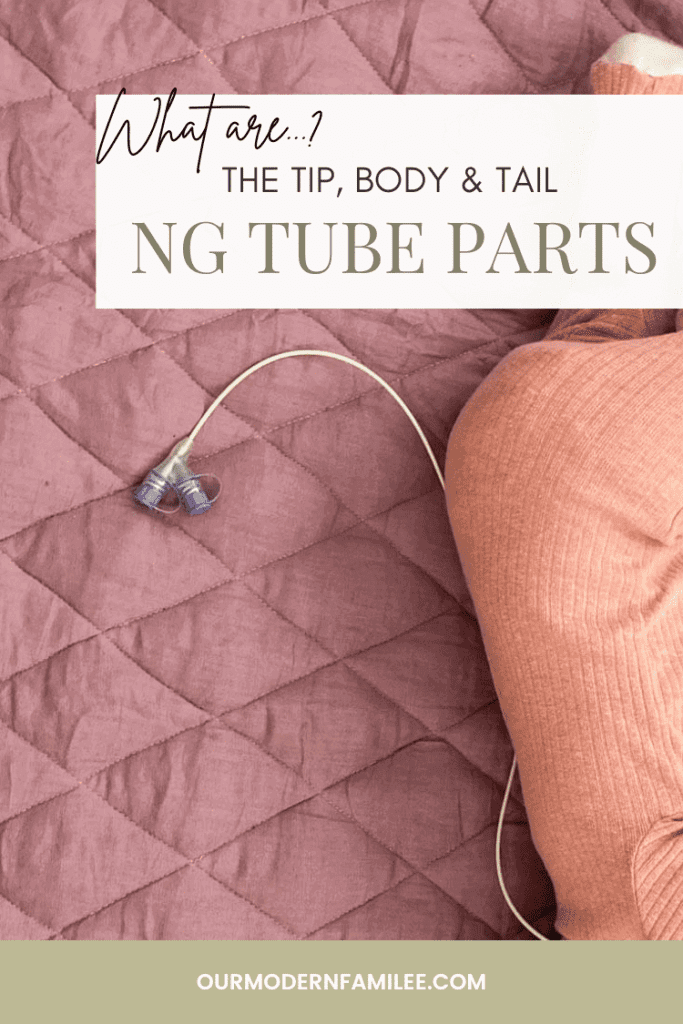
The start of our NG journey
On my son’s fourth birthday, I was not at home with him. Instead, I was in the hospital with his baby sister who had another medical procedure under anesthesia the day before. Even though she was 3 weeks old, he had not yet met her. He was eagerly anticipating her arrival, so it didn’t feel good that he couldn’t meet her. And another punch to the gut that we were apart on his birthday. Being a medical mom with multiple kids tugs on those invisible heartstrings extra hard.
My daughter was recovering from open-heart surgery due to her Congenital Heart Defects (CHD) and had encountered some bumps along the way. One of these speed bumps was a paralyzed vocal cord. This directly impacted her ability to eat safely. Her medical team decided to put her under again and provide an injection to help bulk up her vocal cord temporarily as we waited for it to (hopefully) heal itself.
Her vocal cord paresis was one of the reasons, but not the only reason, why she had to use a feeding tube. So here I was, on my son’s birthday, in the hospital in training for NG tube feeding at home. We had to watch several videos and take a hands-on training class. It was not where I wanted to be, yet I eagerly drank up the information as this was a key requirement of finally being allowed to take our daughter home.
Unexpectedly embarking on a feeding tube journey with your baby can be tough to wrap your head around. Here I was a third-time mom, thinking I knew what to expect. But every baby is different and every journey is unique.
Feeding tube awareness is generally low, especially considering, there are hundreds of reasons someone could need one. When you dive deeper into the world of feeding tubes, learning their ins and outs, it can make accepting and embracing them a whole lot easier.
There are different types of feeding tubes to accommodate various needs. In this post, I’m going to go over the NG (nasogastric) feeding tube parts for enteral feeding as this was what my daughter used. NG tubes themself are fortunately quite simple. That’s not to say inserting it and managing the care is easy, but the physical NG tube product is straightforward.
NG Tube Invention
In the early days, there were tubes used for stomach or intestine emptying. They experimented with these same tubes to address enteral feeding needs, though with limited success due to their crude construction from materials like brass and glass.
In 1921, American physician Dr. Abraham Levin introduced an NG tube design resembling modern ones. Levin tubes are still in use today. Across the pond in the same year, English physician Dr. John Alfred Ryle crafted another modern NG tube. He refined an Einhorn tube, opting for an all-rubber construction for enhanced flexibility and patient comfort – Ryles Tube. These two doctors are credited for creating what we know today as nasogastric feeding tubes.
In 1975, Dr. Robert Dobbie and Dr. James Hoffmeister invented a newer NG tube with a weighted tip to help with insertion. This is called the Dobhoff tube and is commonly used for NG tube enteral feeding today.
There are additional NG tubes, such as the Salem Sump catheter, however, these are intended for emptying and draining purposes rather than feeding. The following will discuss parts and considerations for NG tubes for feeding.

Parts of an NG tube
Nasogastric feeding tube parts can vary slightly depending on the specific brand and type of tube. They should all have the same components, though the color, ports, markings, and minor details may look different.
Tip
The tip of the NG tube has an eye, a small opening or hole, which is where the milk, medications, or other nutrition comes out of to drop in the stomach
- Some NG tips are weighted to help with the insertion.
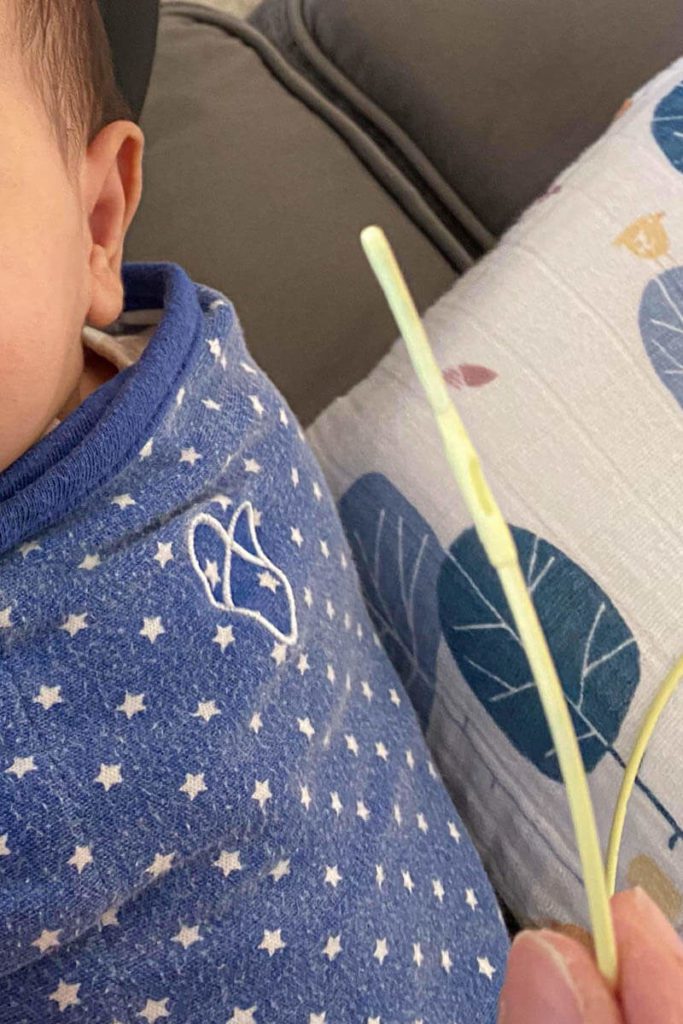
Body
Most of the NG tube product is the body or tube length. You can find tiny printed numbers on the body indicating the length in centimeters. This is important because you need to measure how far to insert the tube depending on your baby’s size and anatomy. The markings help you measure, insert it appropriately, and double-check it stays at the correct measurement before providing feeds and medication.
Tubes come in various lengths depending on the patient’s age and size, tube placement, and stock availability.
Tail
The tail of the tube is at the opposite end of the tip. At the tail, you will typically find two ports with caps (some are slip-tips, others are screw-on). These open and close and are used to connect feeding tube syringes and feeding tube bags to provide nutrition and medications.
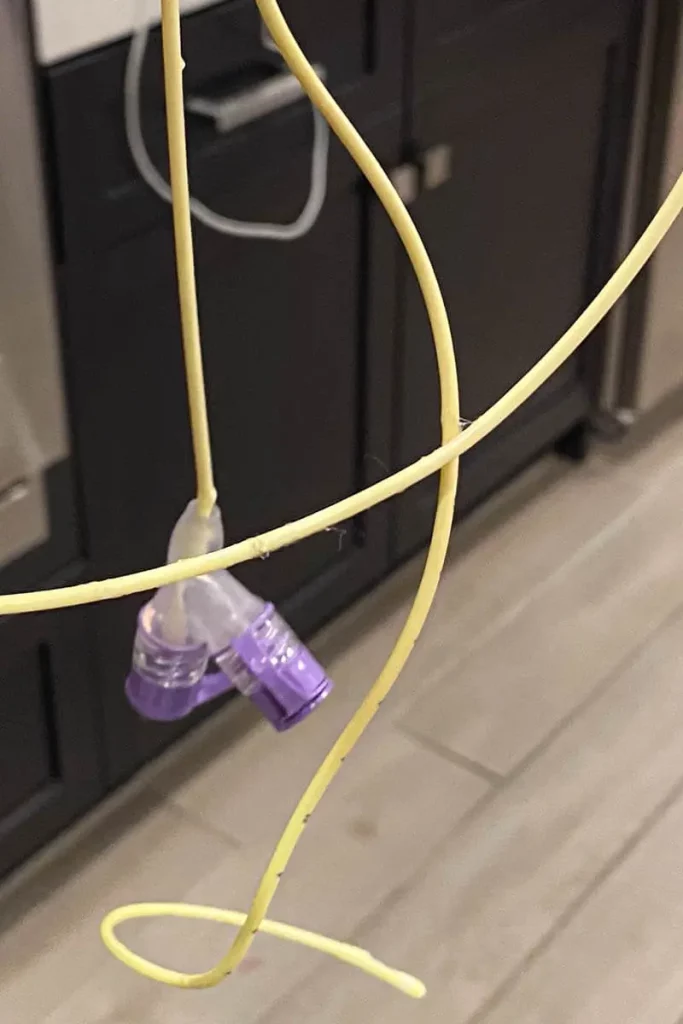
Stylet
Some, though not all, NG tubes have a very thin and flexible metal stylet, or guide wire, that fits inside the tube. It’s supposed to help you insert the tube more easily.
Where everything NG goes inside your baby
The tip of the NG tube is inserted into your baby’s nostril. It is directed to the back of their throat, down their esophagus, and ends in their stomach.
When the NG tube is in place, the tip stays in the stomach. The tip has a little hole, or eye, which is what you want in their stomach. Any milk, medicine and other nutrition pushed through the NG tube will come out of this little hole and end up in their stomach as is intended.
Part of the tube length will remain inside their body.
PLEASE NOTE: Only attempt to insert an NG tube if you have been directed to and received proper training by your child’s medical team. Improper insertion can cause injury and damage.
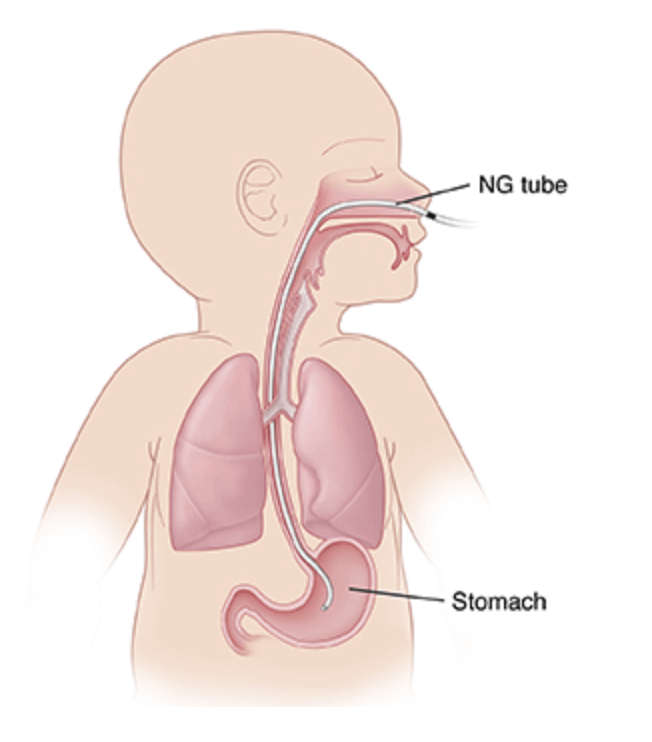
Image Source: Saint Luke’s
Where everything NG goes outside your baby
You will see part of the tube length coming out of their nostril. Medical tape is used to secure it in place on their cheek.
The remaining tube body – from their nostril to the tail – will remain outside the body. The tail with its ports has to stay outside to connect and process their feeds and medication.
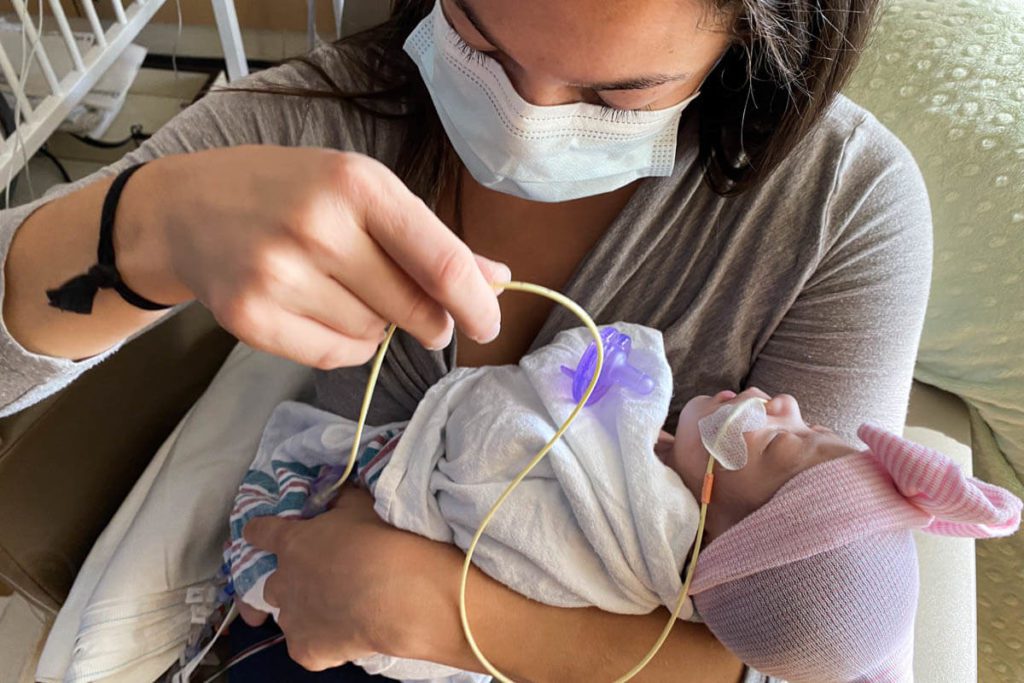
OG and NJ variations
OG (Orogastric) tubes are very similar to NG tubes, however, the tip of the tube is inserted through the patient’s mouth instead of the nostril. Otherwise, it’s the same, back to their throat, down the esophagus, and ending in the stomach.
ND (Nuodenum) tubes and NJ (jejunum) tubes are the same as NG tubes, however, the tip is placed further down past the stomach with the tip ending in the intestine.
Keeping it simple
NG tubes are simple once you learn about them. They have a tip, body, and tail with ports. The tip and part of the tube go inside your baby, and the remaining tube length and tail stay outside your baby. Breastmilk, formula, and medicines are pushed through the NG tail’s ports through the tube and drop into the stomach from the hole in the tip.
It can be overwhelming at first. Once you take a little time to familiarize yourself with the different parts and how it all works, you get comfortable with it quickly. Some babies need a little extra support with feeding and that’s okay. Thankfully NG tubes were invented to provide this alternative feeding method to babies who have difficulty eating in other ways.
Sources: Avanos, Cleveland Clinic, LITFL, NIH, SickKids

